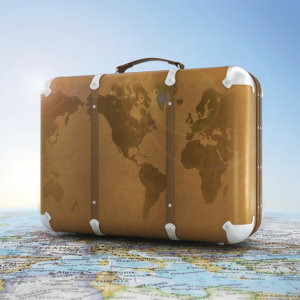Predictive Analytics Are a Traveler’s Best Friend
Amadeus uses analytics to help customers avoid the headaches of air travel.
Topics
Competing With Data & Analytics
“Travel intelligence” may seem an oxymoron when flying today’s cramped, choked, and often cheeseparing skies. But Amadeus, one of the largest vendors of travel and technology services, thinks intelligence is something the travel industry wants more of — and will pay for.
Amadeus, the Spanish concern worth $4.1 billion [3.1 billion euros, 2013; $2.2 billion or 1.7 billion euros, first six months of 2014], counts as customers tens of thousands of travel agents, including corporate, consumer, and online counterparts like Kayak.com and Orbitz, as well as major airlines.
To Amadeus, “travel intelligence” used to mean data on ticketing and bookings. But its customers now want more than that kind of data, says Thomas Cauthen, Amadeus’ global head of sales and business development for travel intelligence. So in February 2013, Amadeus created a travel intelligence business, hiring as its head Pascal Clement, who was running SAP’s Enterprise Information Management business.
Since then, the Travel Intelligence unit has hired close to 100 people, among them more than 40 data scientists, a position created at Amadeus just last year. The unit is using analytics to create new products like Schedule Recovery, which addresses what the industry calls “irregular operations” — what the rest of us would call “delays.” Schedule Recovery will automatically rebook people who miss a flight.
Hiring 40 new data scientists at a time when many companies would like just one or two created an obvious challenge. Cauthen says Amadeus was fortunate in that it could tap into some of its existing staff; in particular, Amadeus pulled data scientists from its operations research group. The rest it hired from outside the company, taking advantage of ties it had with universities, especially in Europe.
It looked for operations research specialists from other industries, and nabbed people with PhDs in biology, statistics and mathematics. It even hired an astrophysicist from the European Space Agency. “There, she was putting equipment into orbit, and here we ask her to work on personalization,” Cauthen says. “Her comment was that analyzing stars is not that far off from analyzing customers and their different priorities.”
Such data scientists had to be able to talk with clients, “to put the piano players on the piano,” Cauthen says. Travel Intelligence went into the hiring process looking for data scientists who would join into field teams that included a sales lead and a business consultant. The point was to help the data scientists understand what customers need and create more effective tools working with counterparts inside Amadeus’ operations.
It also wanted data scientists with a particular bent for problem solving, says Peter Raven, director of business development in Amadeus’ European-based operations. “It is not just that they can do stats and math,” he says. The analysts need to understand the problems outlined by the business experts, and find ways to parse the company’s data and solve the problems. “It’s that mix that makes the talent pool so important,” says Raven.
So how did it find so many data scientists? It helps to be a flexible, mobile organization. Data scientists can live in Nice, Madrid or Atlanta. Plus, some people are drawn to the travel perks: Amadeus has clients all over the world, and 15 development centers.
While it built up its ranks of data scientists, Amadeus recently licensed software from Netuitive to do predictive analytics for its systems performance. Raven said Amadeus actively uses analytics to manage its systems performance, but with thousands of servers and their ancillary equipment, the company has nearly a million data points to monitor.
“It’s a flood of information about the components in the data center — software, hardware, disk drives, databases, the whole works,” he says. “That’s way beyond anything a human-centric management approach can handle, and now it’s beyond the capability of even a linear machine-based approach.”
The variables are tracked every five minutes, and some of them every minute. The data team has 15 data scientists, who focus on using real-time data analytics to boost system performance. They must react within three minutes if something appears awry. Raven said the sheer volume of data created the need for automated, predictive analytics.
Raven said the decision to buy rather than build came down to speed. “Netuitive gave way better time to market,” he says.
The skillset for working with real-time analytics is different than traditional analytics skillsets, Raven says. Like Travel Intelligence, his unit pairs its data scientists with an existing position, in his case those with systems expertise.
One difference in recruiting for the two units: there’s less opportunity for travel in Raven’s group, based in the corporate data center in Erding, Germany, outside of Munich. His team does interact with research and development, which is in Nice — “so we let them go see the sun,” he says.

